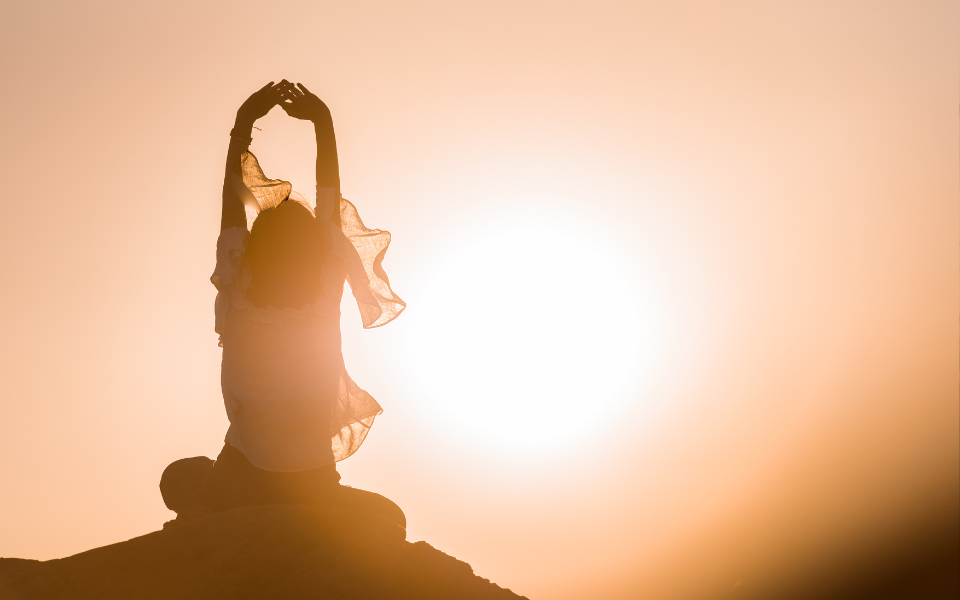So many thoughtful, caring people quietly carry fear and anxiety inside. For some, it feels like a racing mind that never settles. For others, it shows up as a tight chest, restless nights, or a scattered feeling of being “off.” Life may look good on the outside, yet something still feels missing on the inside.
The good news is that with the right tools, self-awareness, and a growth-oriented mindset, it is possible to feel more peaceful and even use fear and anxiety as invitations to grow and evolve.
Fear vs. Anxiety: What’s the Difference?
Although fear and anxiety are closely related, they aren’t the same.
-
Fear is the body’s natural response to a real and present danger.
-
Anxiety arises when the same alarm system gets triggered by our thoughts and perceptions, even when there’s no immediate threat.
As Dr. Lissa Rankin explains in The Fear Cure, “True fear is a natural survival mechanism, here to protect you, and false fear is an important teaching too, here to enlighten you.”
Neuroscientist Dr. Wendy Suzuki, in Good Anxiety, reminds us that fear and anxiety aren’t flaws to eliminate. They’re part of being human. The problem is not that we feel anxious, but that we’ve lost balance and our nervous system gets stuck in overdrive.
Where the Nervous System Fits In
Fear and anxiety activate the fight-flight-freeze response of the nervous system. Stress hormones flood the body, preparing us to survive. I share more about why this is important in Why Nervous System Regulation Holds The Key To Deep Healing.
This response is useful in moments of real danger, but when it gets stuck “on,” our system can’t return to balance. That’s where practices like meditation and mindfulness become powerful: they calm the nervous system, reset the body, and open space for us to reconnect with ourselves.
If you’ve ever struggled to meditate when anxious, you’re not alone. You may find this post reassuring: Struggling With Meditation? Here’s Why And What To Do Instead.
5 Mindfulness Tips for Fear and Anxiety
When it comes to fear and anxiety, both “bottom-up” and “top-down” approaches are needed. Bottom-up practices work directly with the body and nervous system by calming the physiological fight-flight-freeze response through tools like conscious breathing. Top-down practices engage the mind by shifting the stories we tell ourselves, reframing anxiety, and cultivating a more compassionate mindset.
The following 5 mindfulness tips weave both approaches together, supporting you in calming your body while also creating space for new, more life-giving perspectives.
1. Breathe deeply to reset your nervous system.
One of the quickest ways to shift out of fight-or-flight is a breathing technique: take a deep inhale, add a short inhale on top of it, then slowly exhale. A few rounds can calm your body within minutes.
I wrote more about this and shared a heart-focused practice in The Power Of Conscious Breathing To Come Home To Yourself.
2. Begin a simple daily meditation practice.
Meditation doesn’t need to be long or complicated. Even a few minutes a day helps calm the mind, reduce anxious thoughts, and reconnect you with deeper wisdom.
If you’re wondering where to start, this post may help: The Best Meditation Practice For Inner Peace and To Reconnect With Yourself.
3. Offer kindness to yourself.
Fear and anxiety often trigger self-criticism, which makes things worse. Mindfulness helps us meet ourselves with compassion instead. When we soften toward our experience rather than fight it, something inside begins to shift.
Explore more: Self-Compassion Practice: The Kindness You Forgot to Give Yourself.
4. Shift your mindset: let fear be your teacher.
What if anxiety isn’t a sign that something is wrong with you, but an invitation to look more deeply? Research shows reframing anxiety can help us use it for motivation, creativity, and resilience. Fear becomes less an enemy and more a wise guide.
5. Lean in rather than resist.
As Carl Jung wisely said,
What you resist not only persists, but will grow in size.
When we allow space for fear and anxiety instead of pushing them away, we discover they have less power over us. Meeting them with presence and compassion creates the freedom to live more fully.
A Soulful Reframe
Fear and anxiety are not flaws to fix but signals that we need to pause, regulate our bodies, and reconnect with ourselves. They remind us that even in our discomfort, wisdom is waiting.
Perhaps the invitation isn’t to get rid of fear and anxiety, but to ask: What are they here to teach me?



Leave A Comment